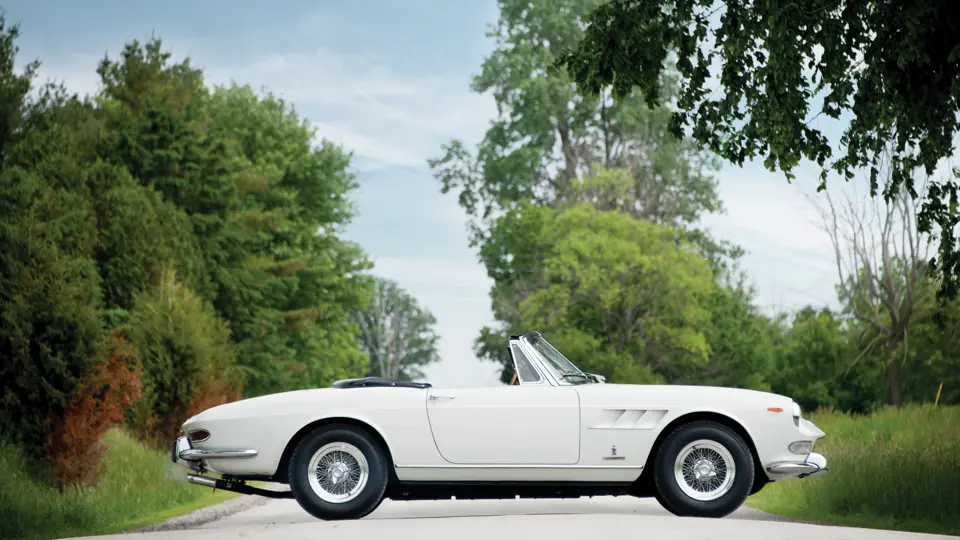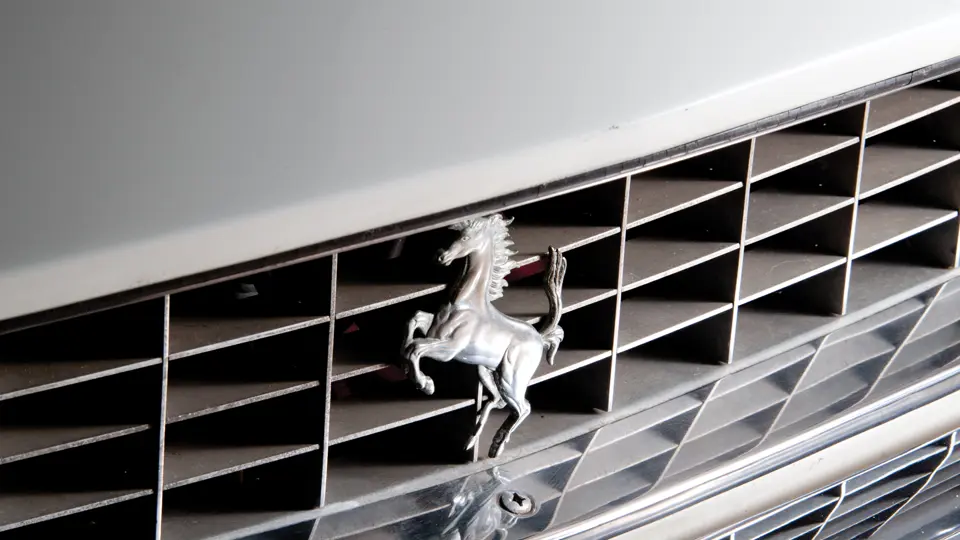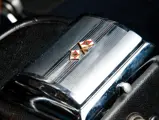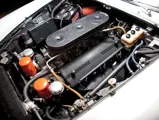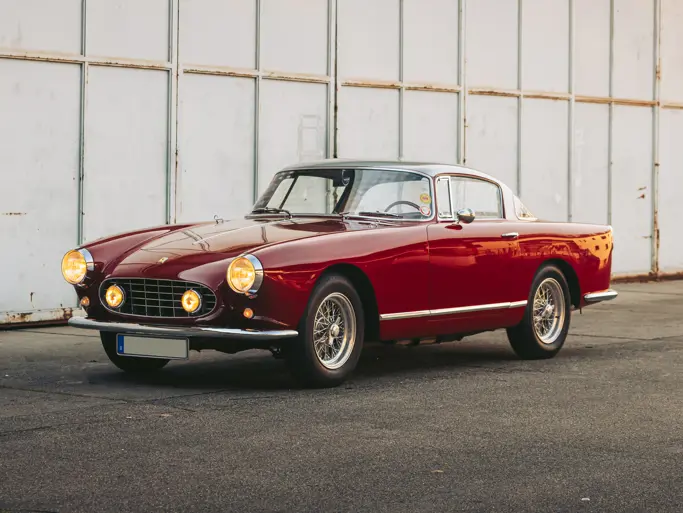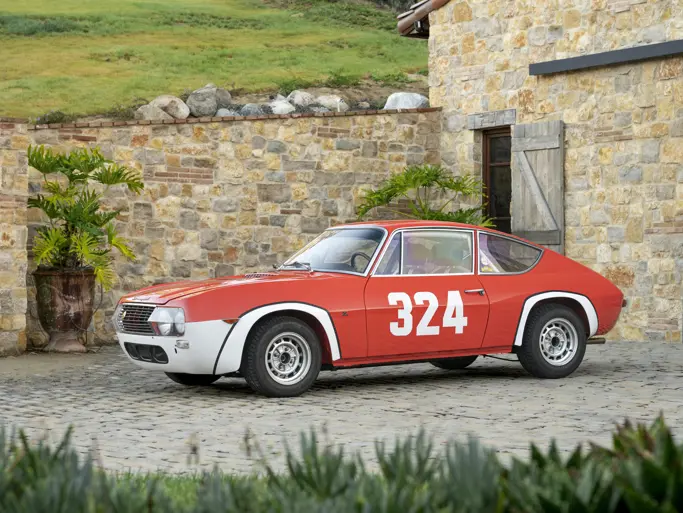
1966 Ferrari 275 GTS by Pininfarina
{{lr.item.text}}
$1,760,000 USD | Sold
{{bidding.lot.reserveStatusFormatted}}
- Two owners from new; current ownership for 37 years
- Original paint and interior
- Under 24,000 original miles
- Decades of enjoyment by a true enthusiast
- An incredibly original “once-in-a-lifetime” 275 GTS
260 bhp, 3,286 cc V-12 engine with triple Weber carburetors, five-speed manual transmission, independent front and rear suspension with unequal length A-arms and coil springs, and front and rear hydraulic disc brakes. Wheelbase: 94.5 in.
THE 275 GTS
Ferrari’s 275 GTS, intended as a replacement for the 250 GT Series II Cabriolet, was premiered alongside its closed sibling, the 275 GTB, at the 1964 Paris Auto Show. While both cars looked remarkably different on the outside, they both bore similar 3.3-liter Colombo V-12s, chassis, and suspensions underneath. The 275 GTS was largely intended for the American market, as Ferrari convertibles had sold well in climates like California and Florida, where the attractiveness and marketability of a high-performance grand touring cabriolet had long been established.
While the 275 GTB’s bodywork was crafted just a short distance away from Ferrari, at Scaglietti’s facilities in Modena, the bodywork for the GTS was designed and constructed by Pininfarina, at their facilities in Turin, and the car’s overall design was one of sporting elegance. Its smooth and more understated lines are handsome and display an air of sophistication, discreetly hiding the race-derived V-12 that sits under the hood. The interior displayed the same personality, yet it was perhaps more luxurious than earlier Ferraris, but it still retained both a Nardi wood-trimmed steering wheel and gated shifter, traits that would link it with its more performance-oriented siblings. One notable difference between the Coupe and Spider, other than the bodywork, is the GTS’s less heavily bolstered, albeit very comfortable, seats, which were trimmed in the traditional Connolly leather.
Even though the 275 GTB was perceived by many to be the more aggressive of the two, as it was better suited to high-performance driving thanks to its fixed roof, the 275 GTS was certainly no slouch. Its top speed was in excess of 140 mph, and with a curb weight of 2,960 pounds, the 275 GTS was capable of accelerating from 0 to 60 in 7.2 seconds. Road & Track raved about the 275 GTS in their road test, which was included in the September 1966 issue, commenting that “with the top down, all the extraneous noises disappear and one simply exults in the purr from those beautiful tailpipes. Sheer ecstasy.”
All told, only 200 examples were produced, which was equal to less than half the 275 GTBs produced. As expected, most of the examples produced found their way to the warmer climates of America’s west or east coasts.
TWO OWNERS FROM NEW
Chassis 07805 was delivered new to the United States through Chinetti Motors, of Greenwich, Connecticut, in January 1966 and was then shipped to Loeber Motors, the Ferrari dealer in Chicago, Illinois. On April 15, 1967, it was sold for $12,400 to its original owner, prominent Windy City funeral director M.J. Suerth.
Mr. Suerth would escape Chicago’s infamous winters to a home in Fort Lauderdale, Florida, and that is where the new 275 GTS was directly shipped. For the next 10 years, it spent the winter being enthusiastically driven by its owner, with its cool “Floribbean” colors of Bianco (18934 M) over Bleu (3015 VM) fitting right in with the sunny climate.
In April 1977, the Suerth 275 GTS was advertised by its original owner in the Ferrari Club of America Newsletter, which stated that it had 17,785 recorded miles on its Borrani wire wheels. The current owner, a long-time Ferrari enthusiast, saw the advertisement, contacted Suerth, and purchased the car that same month for $18,000. When he picked up the car, he found that it was outfitted with some unusual accessories. There was a small cocktail bar set up over the passenger seat and gold MJS monograms, an anniversary gift from Mrs. Suerth, on the doors. Most surprisingly of all, the car had been outfitted with a trailer hitch. Mr. Suerth had used his 275 GTS primarily to tow a dinghy to and from his larger yacht.
In a letter to the buyer, Mr. Suerth wrote, “I hope you will enjoy driving the little speed demon as much as I did. It has always been a dependable car.” Dependable, indeed! The current owner has lovingly driven, shown, and enjoyed the car frequently during his 37 years of ownership, running it to concours and club events all over northeastern United States, including at the Ferrari Club of America’s annual meet at Watkins Glen in 1990 and at the Meadow Brook Hall Concours d’Elegance in 1997. He has taken the time to preserve the Ferrari’s incredible original condition, with the only modification being to remove the gold MJS monograms and trailer hitch, which were returned to Mr. Suerth at his request. The current owner kept this car, among others, in a converted 19th century barn. During its stay, this 275 GTS has sat witness to many cars come and go from the shared wooden space. From Gullwing Mercedes to Iso Grifos to Maseratis, but the 275 GTS remained. It is a truly exceptional example, and its condition and road manners reflect its extraordinary custodianship. It is sure to please drivers and onlookers for decades to come.
The car is accompanied by its original owner’s pouch and all books, its two original key sets (including the original Pininfarina body keys), its original and complete tool roll, the original purchase invoice from Loeber Motors, and correspondence between the current and first owner regarding the purchase of the car, confirming its two-owner history.
After having spent nearly four decades transporting its current enthusiast owner wherever he wanted to go, in traditional 12-cylinder Ferrari fashion, this 275 GTS has been recently mechanically freshened, and it runs and drives beautifully. This car is perhaps the finest original example remaining in the world. It is remarkably unmolested, never restored, still wearing its original finishes, and bearing the most impeccable of histories, as it has been with its current custodian for nearly four decades. It would make a spectacular debut in the Post-War Preservation Class at any concours. Perhaps its most ideal use, however, would be cruising towards one’s yacht, along a quiet Florida coastline.

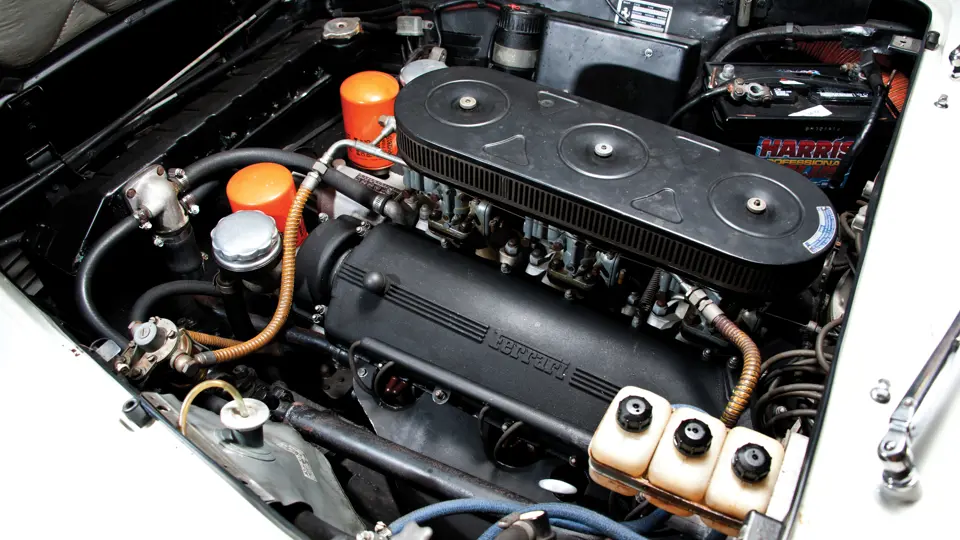


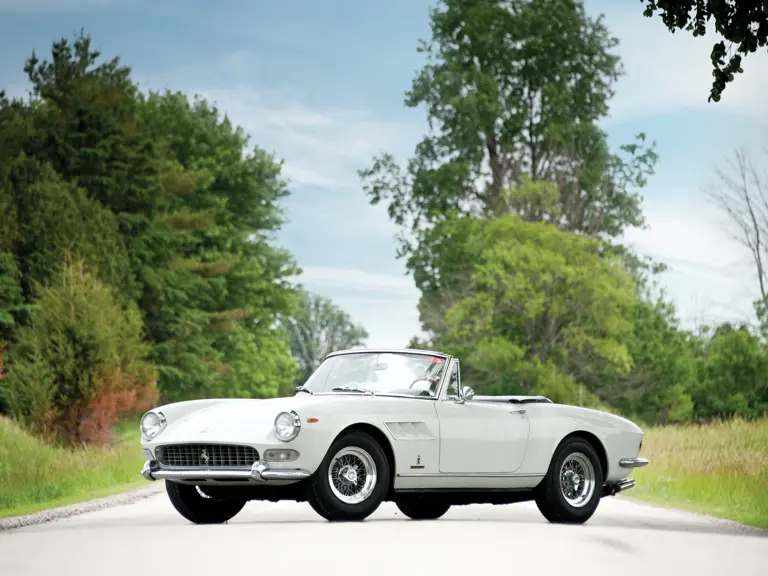

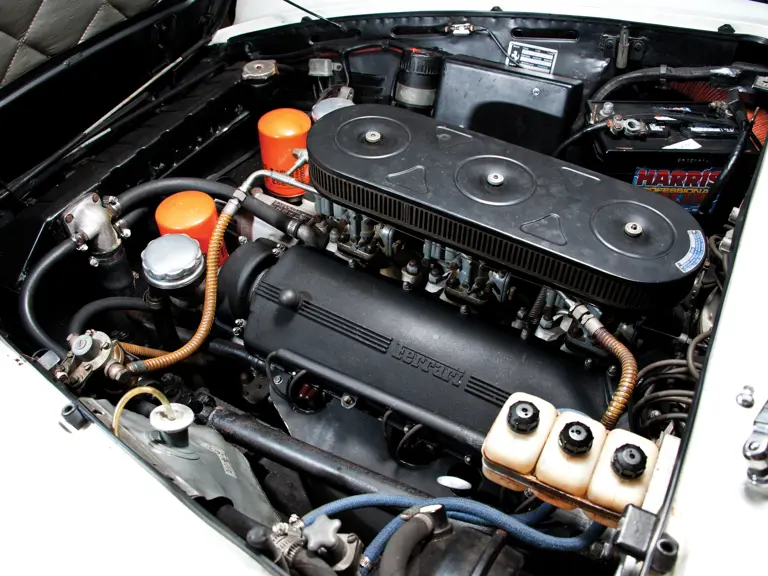
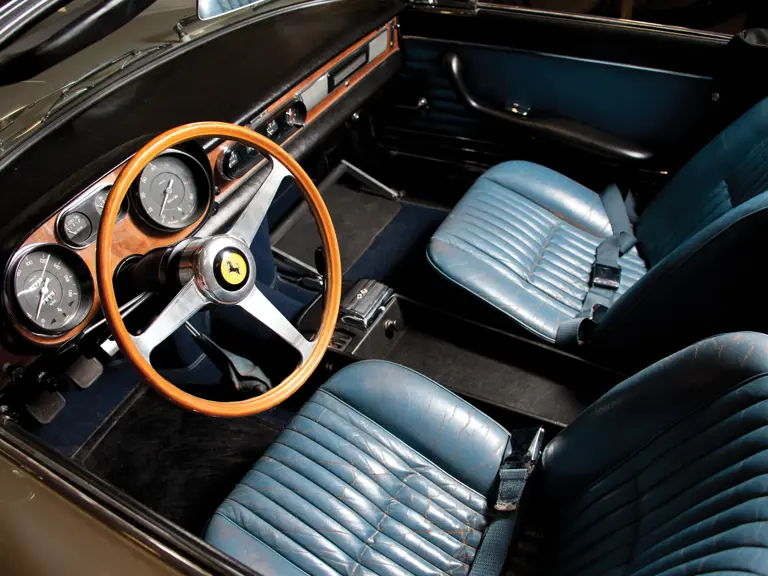

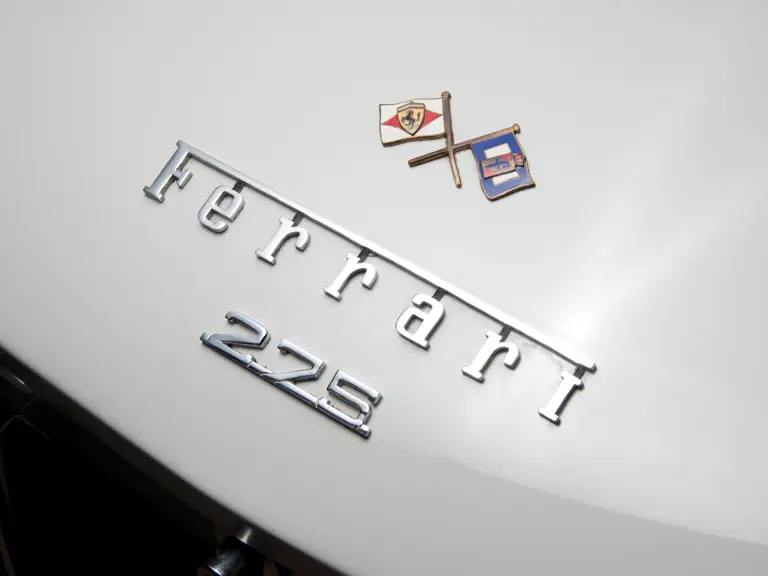


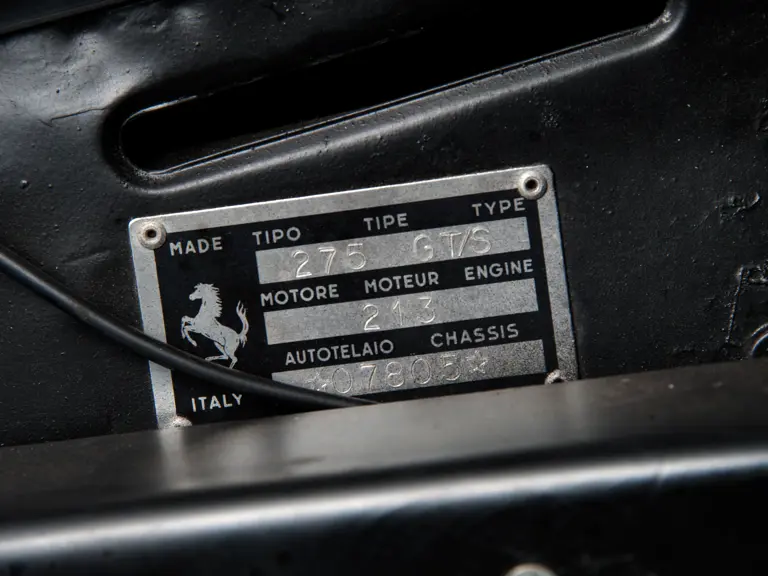


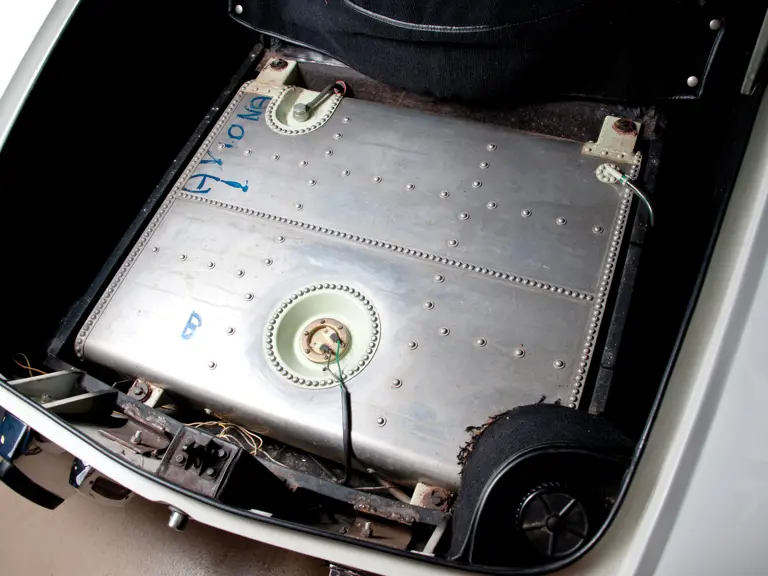
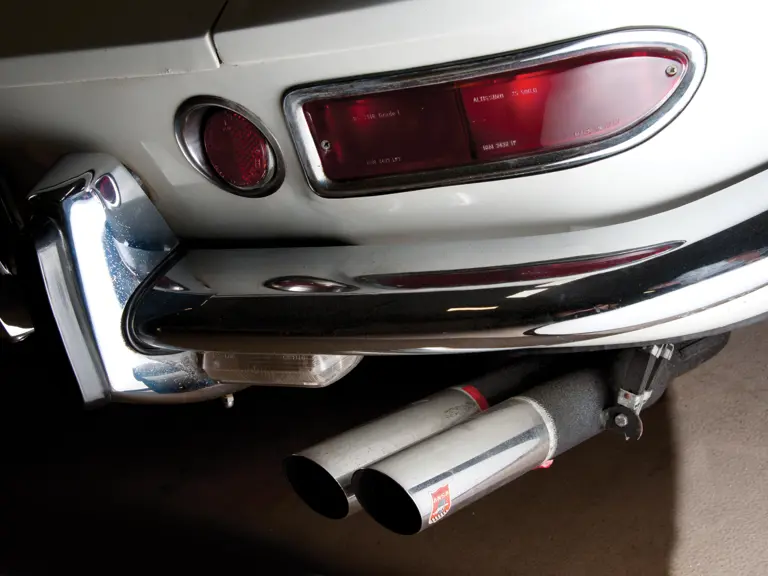
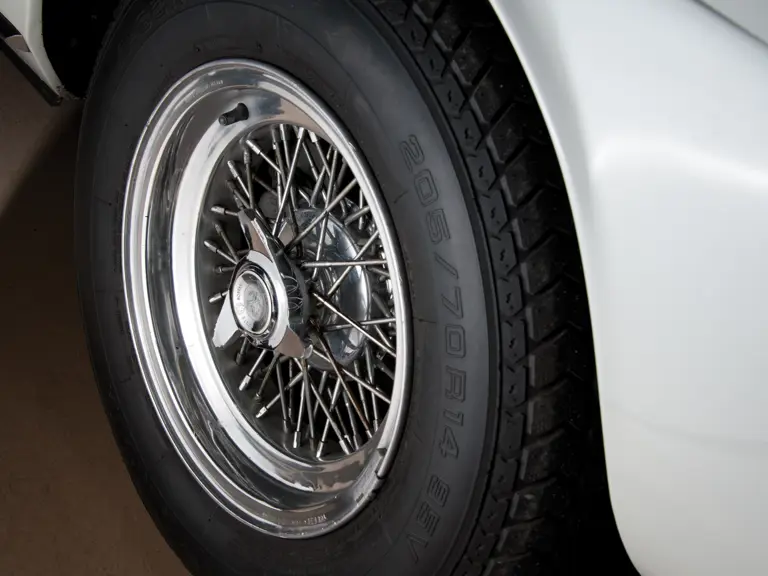
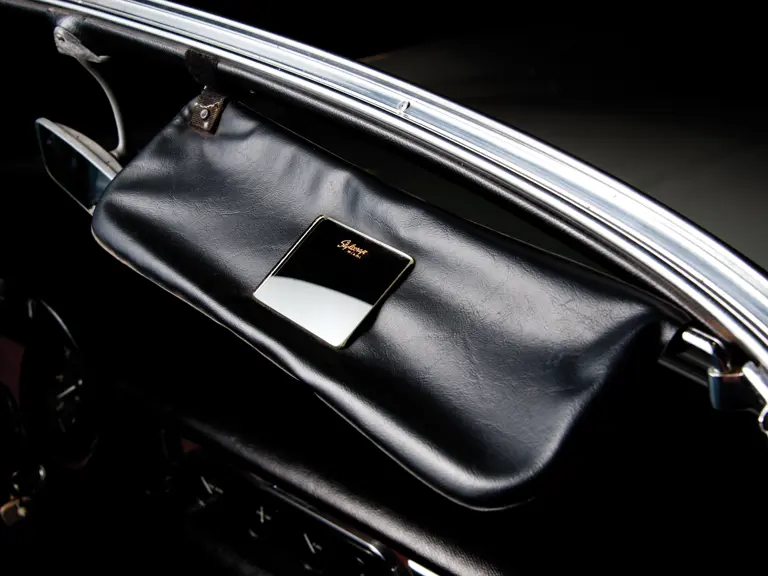

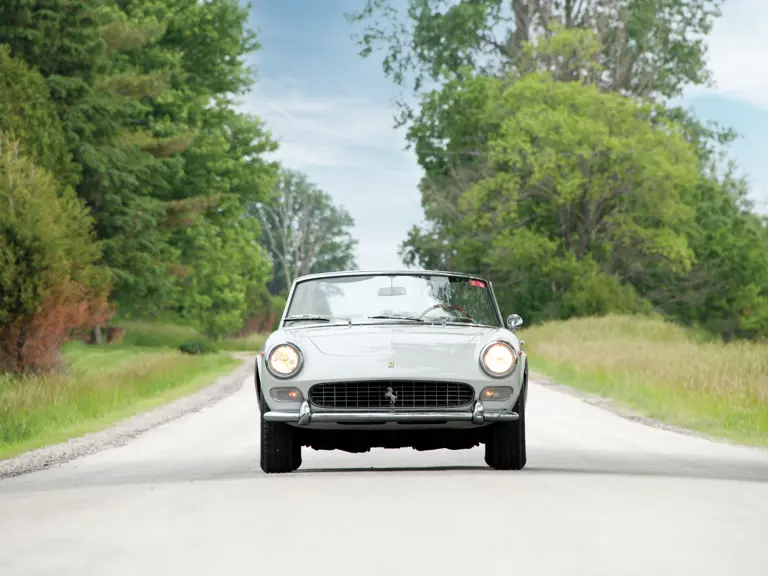
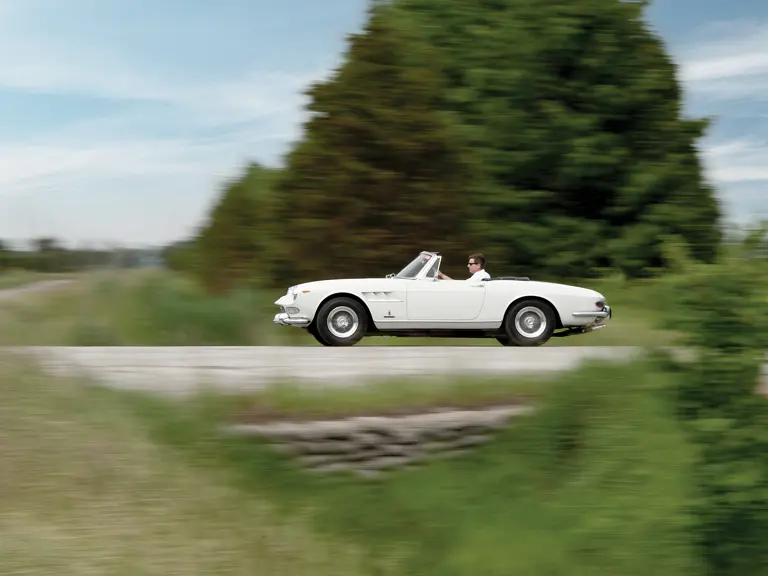
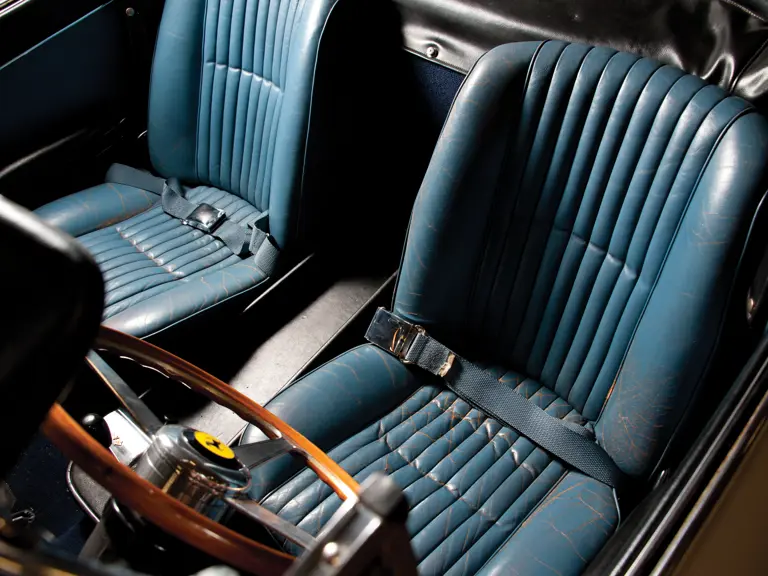
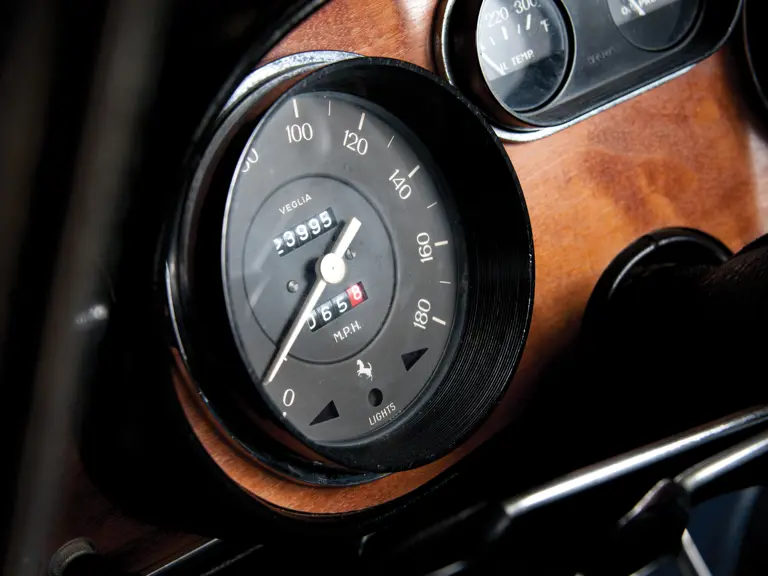
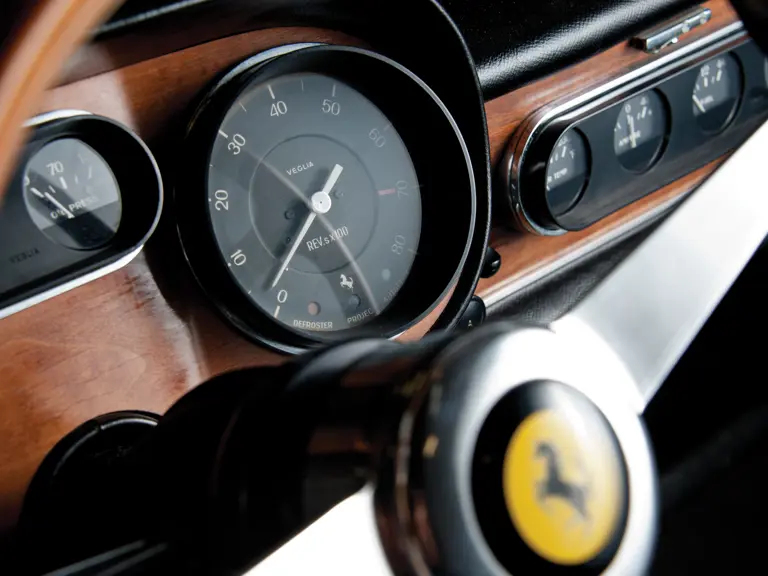

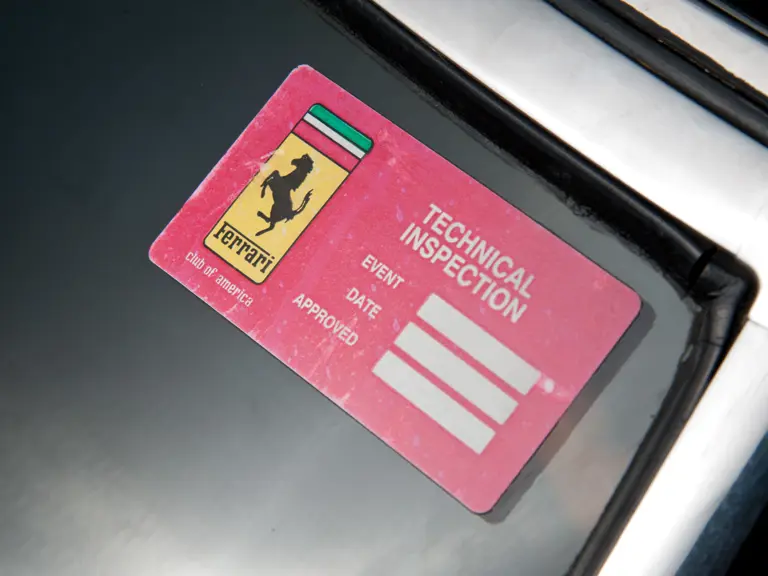
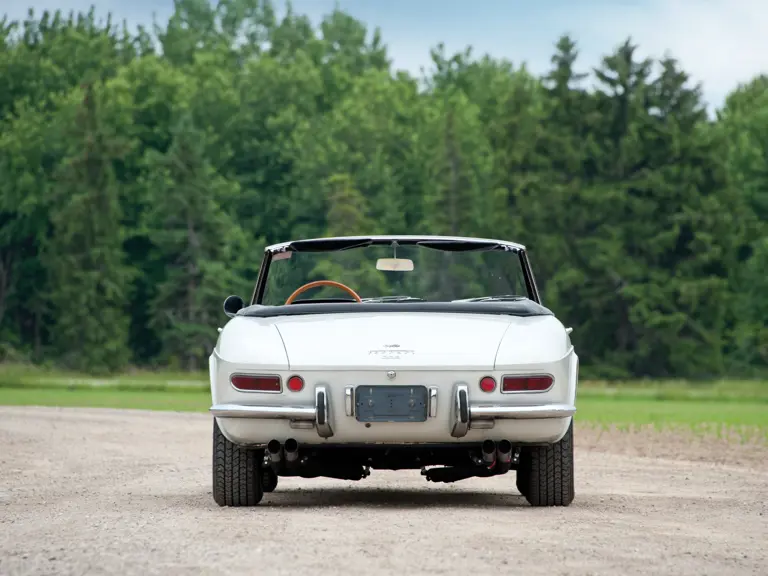
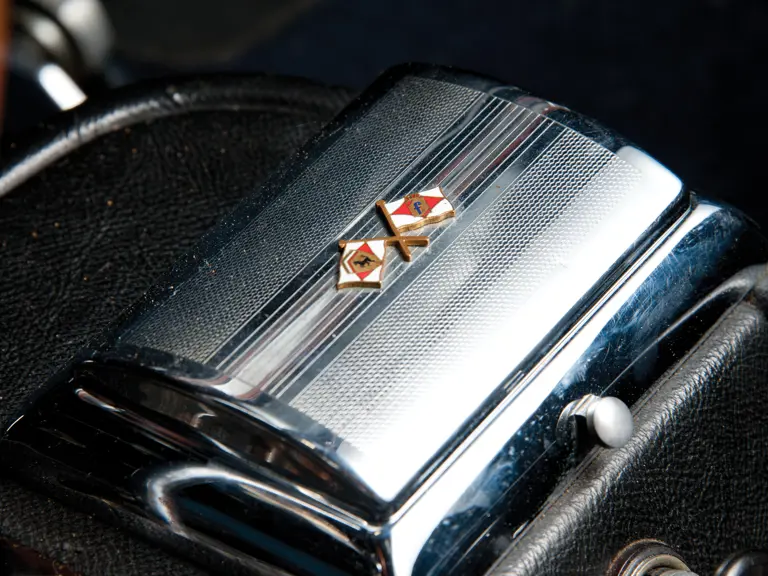
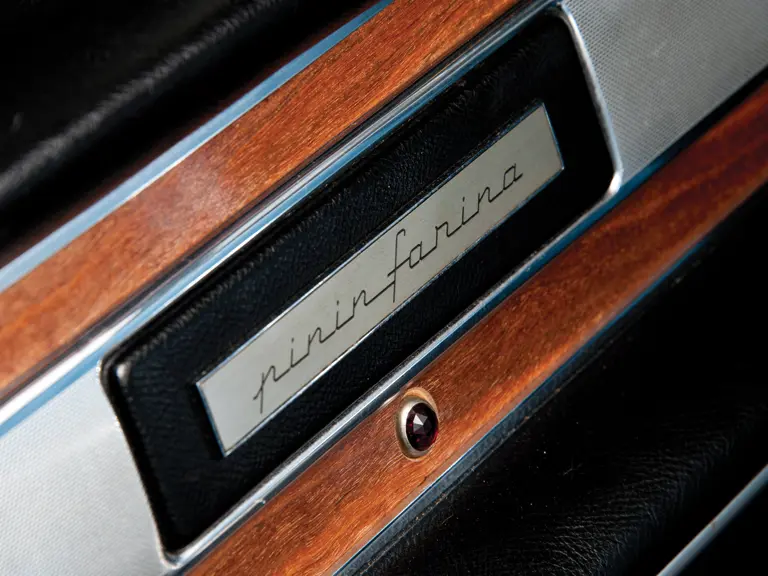
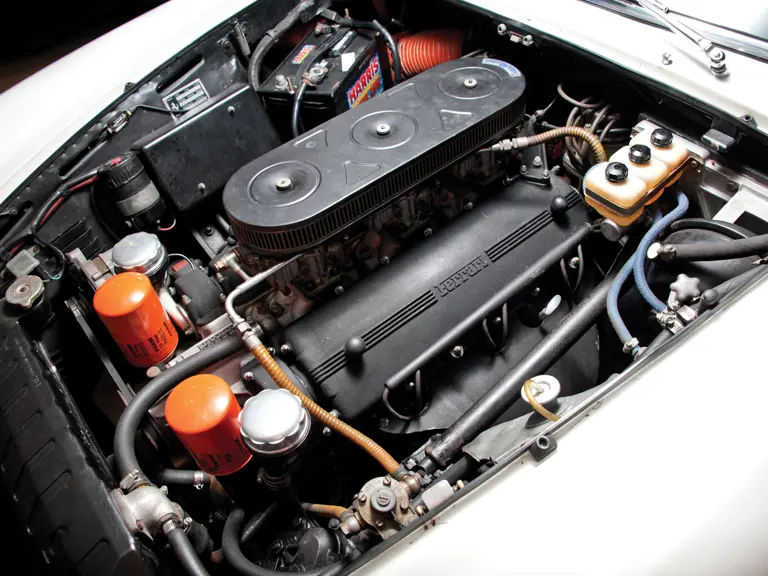

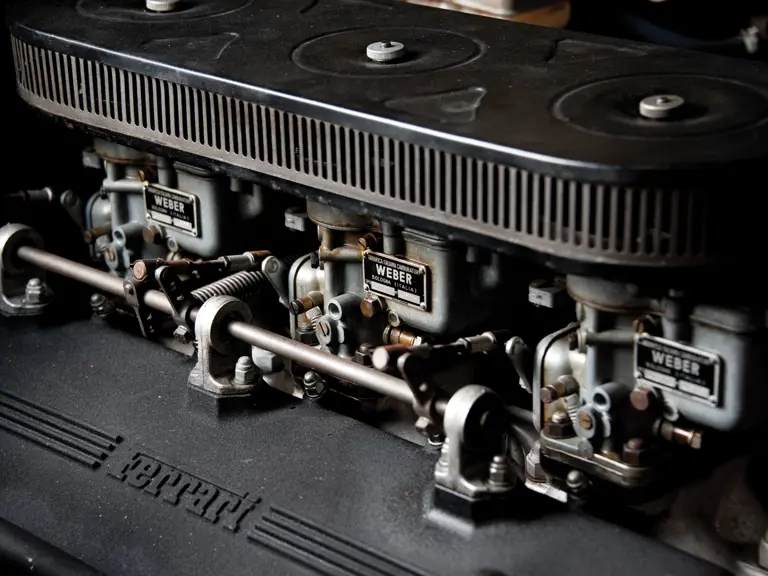

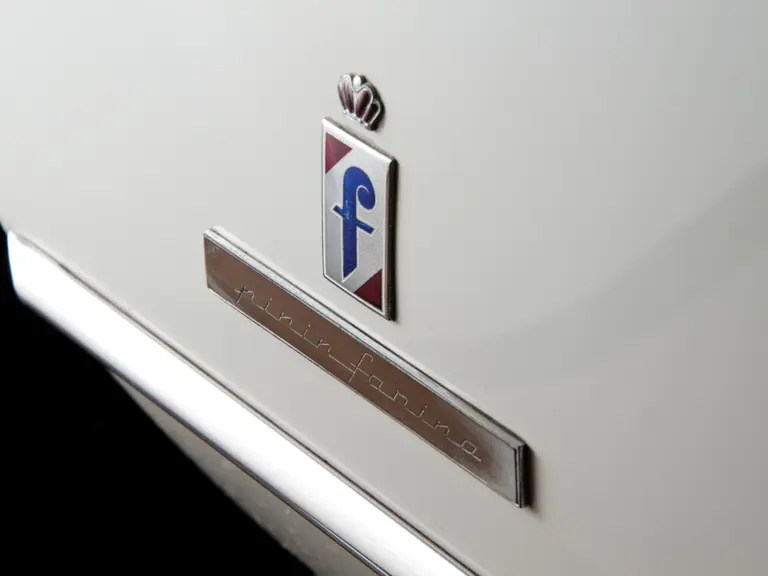
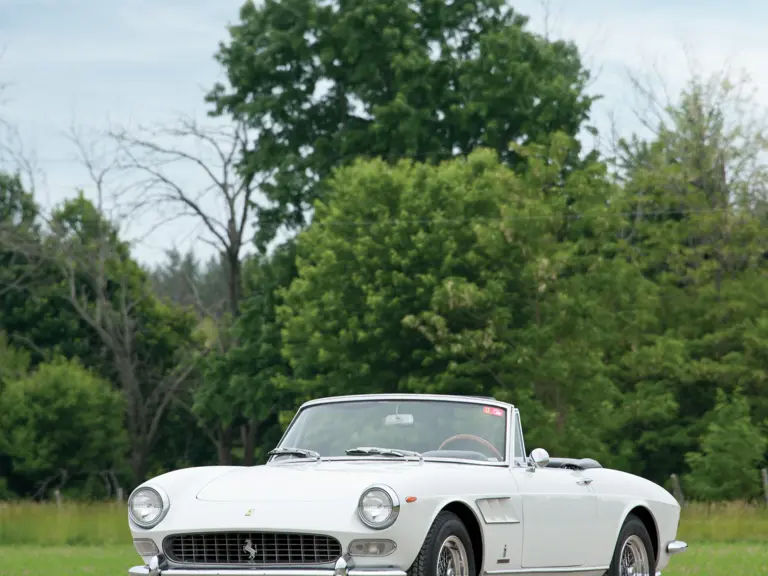
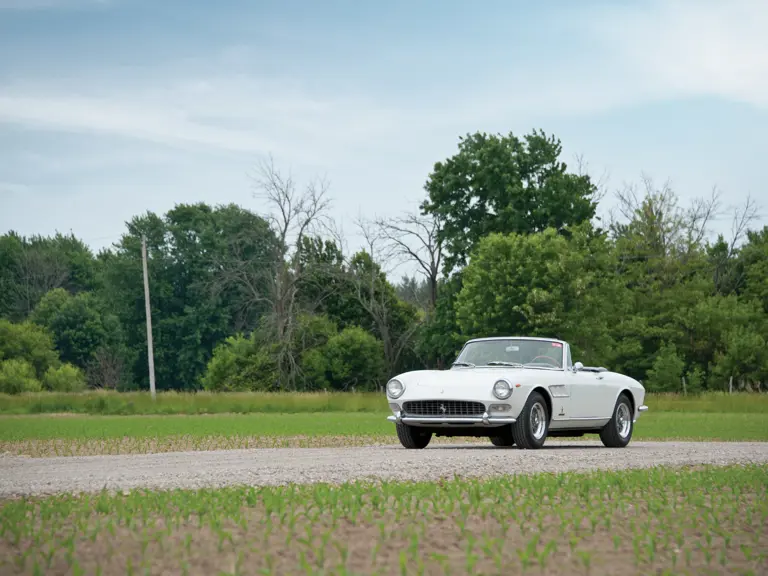


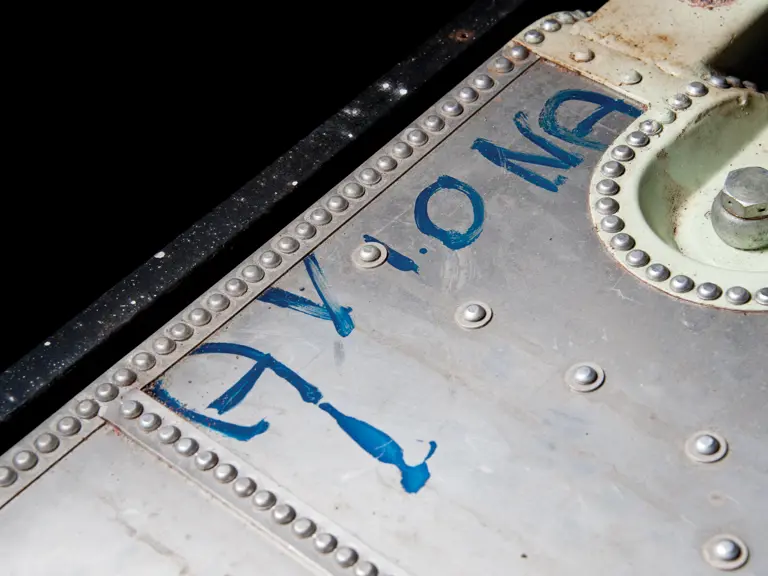
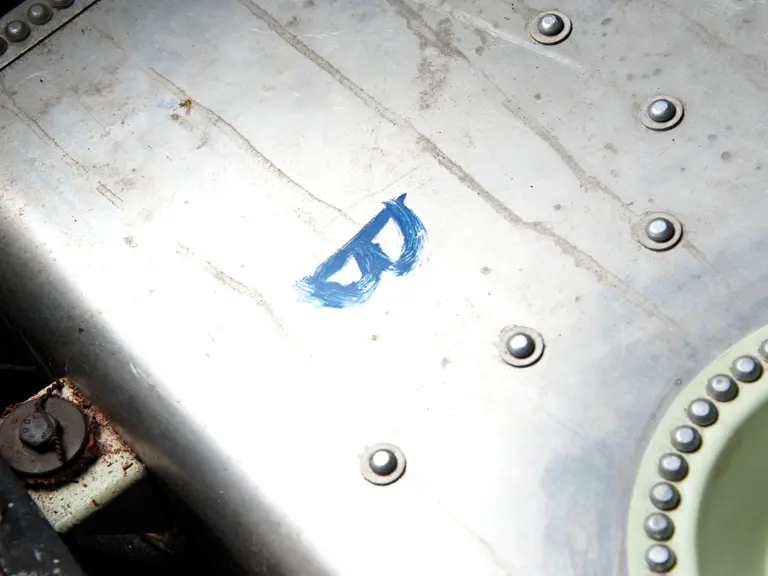
 | Monterey, California
| Monterey, California
